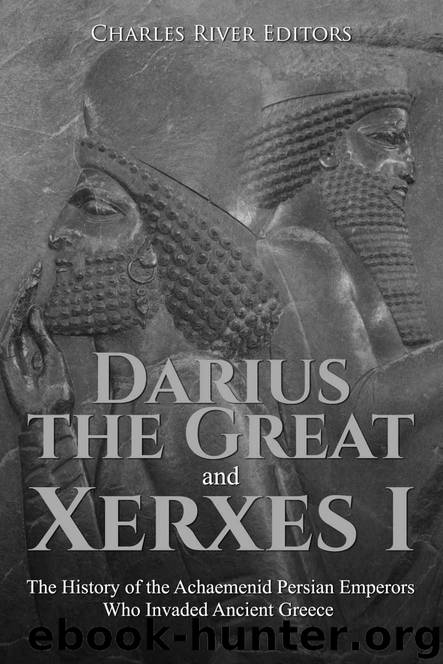Darius the Great and Xerxes I: The History of the Achaemenid Persian Emperors Who Invaded Ancient Greece by Charles River Editors

Author:Charles River Editors [Editors, Charles River]
Language: eng
Format: epub
Publisher: Charles River Editors
Published: 2019-11-30T18:30:00+00:00
Disposition of the forces at Marathon
The appearance of the former Athenian tyrant, Hippias, is also important because he apparently provided useful intelligence to Datis and the Persians that revealed Marathon to be the best place for cavalry operations. It was also close to the recently conquered Eretria, and the close proximity to Eretria was logistically important to the Persians and their potential success not only at Marathon but also if they were to subject all of Attica and possibly Greece itself. Since the Persian army was so far removed from the nearest Achaemenid colonies (which were across the Aegean in Ionia), they were forced to use Eretria as a temporary base and source of their supply lines (Hammond 1968, 32). The short distance between Eretria and Marathon across the bay also provided a safe and quick route for the Persians to move goods and men.
As a result, the Persians assembled their army near Marathon, but the exact size of the army is still open to conjecture. Unfortunately, Herodotus never gave a number for the combatants in the Persian army – only ships – so modern historians are forced to make educated guesses based on the size of the field, the number that Herodotus listed as killed, and the number of Persian ships. A recent study estimates that the number of Persian fighting men may have been around 12,000-15,000 men, which would not be much more than the army the Greeks fielded at Marathon (Doenges 1998, 6), but earlier studies, such as Hammond’s, places the total number of the Persian army as high as 90,000. That said, Hammond noted that many of them would have been sailors and not infantry (Hammond 1968, 33).
Numbers aside, the two forces fought in a completely different way, which each side had perfected over decades, perhaps centuries, in their respective theaters of war. The Persian army was formed of contingents mustered from the furthest reaches of its vast empire, and though one might expect what was, in effect, a “multinational” force to adopt vastly different styles of fighting, ancient historians writing of the battle indicate there was a degree of standardization in their equipment. That said, it is possible the ancient historians who wrote of the battle, all of whom were Greek, decided to lump all Persian forces together by assuming one unit would have much the same equipment as the next, as was the case for the Greek soldiers. The Persian army that faced the Spartans and their Greek allies at Thermopylae was made up of infantry, cavalry and chariot units, each of them apparently equipped in a similar fashion. The infantry was what would be categorized by military historians as “light”, thus not bearing heavy armor or weapons. Each individual Persian infantryman would be equipped with a light, short thrusting spear (which could also be thrown if necessary), a shortsword or saber, a light double-curved bow and a wicker shield. Shield sizes appear to have varied from unit to unit, but archaeological evidence from
Download
This site does not store any files on its server. We only index and link to content provided by other sites. Please contact the content providers to delete copyright contents if any and email us, we'll remove relevant links or contents immediately.
| Africa | Asia |
| Canadian | Europe |
| Holocaust | Latin America |
| Middle East | United States |
Fanny Burney by Claire Harman(26526)
Empire of the Sikhs by Patwant Singh(22974)
Out of India by Michael Foss(16790)
Leonardo da Vinci by Walter Isaacson(13179)
Small Great Things by Jodi Picoult(7019)
The Six Wives Of Henry VIII (WOMEN IN HISTORY) by Fraser Antonia(5394)
The Wind in My Hair by Masih Alinejad(5033)
A Higher Loyalty: Truth, Lies, and Leadership by James Comey(4842)
The Lonely City by Olivia Laing(4746)
The Crown by Robert Lacey(4722)
Millionaire: The Philanderer, Gambler, and Duelist Who Invented Modern Finance by Janet Gleeson(4374)
The Iron Duke by The Iron Duke(4291)
Papillon (English) by Henri Charrière(4195)
Sticky Fingers by Joe Hagan(4100)
Joan of Arc by Mary Gordon(4013)
Alive: The Story of the Andes Survivors by Piers Paul Read(3967)
Stalin by Stephen Kotkin(3875)
Aleister Crowley: The Biography by Tobias Churton(3586)
Ants Among Elephants by Sujatha Gidla(3417)
